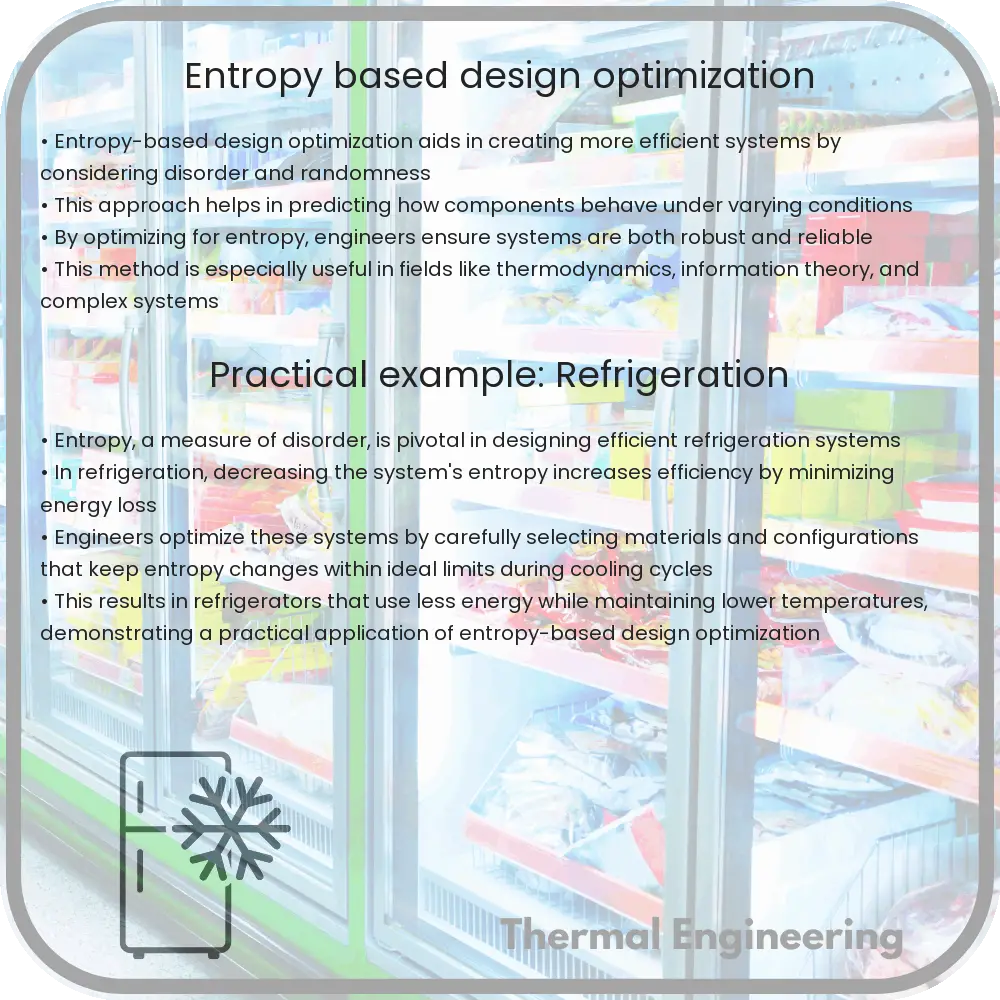Explore the application of entropy-based design optimization in engineering, a method that leverages thermodynamic principles to enhance system efficiency and stability.

Understanding Entropy-Based Design Optimization in Engineering
Entropy-based design optimization is a sophisticated method used in engineering to enhance the efficiency and effectiveness of systems, based on principles derived from thermodynamics. This approach uses the concept of entropy, a measure of system disorder or randomness, to guide design decisions towards more optimal, stable, and sustainable solutions.
What is Entropy?
In thermodynamics, entropy is a fundamental concept that quantifies the amount of uncertainty or disorder within a system. Originally formulated in the context of heat engines by the 19th-century physicist Rudolf Clausius, entropy has found applications far beyond its initial scope. In the field of engineering, entropy is not only a measure of energy dispersal but also a tool for analyzing system performance and robustness.
Basics of Entropy-Based Design Optimization
The core idea behind entropy-based design optimization is to minimize or manage the entropy of a system in a way that aligns with the desired outcomes. For instance, lowering the entropy in part of an engineering system can result in more predictable, reliable, and efficient behavior, which is vital in areas such as aerospace, mechanical, and civil engineering.
In practical terms, entropy-based design optimization typically involves the following steps:
- Identification of the system’s key parameters and their effects on system entropy.
- Modeling and simulation of the system to understand how changes in these parameters affect overall performance.
- Application of optimization algorithms to find the best set of parameters that minimize or control entropy.
Application of Entropy in Optimization Algorithms
Entropy-based optimization commonly uses algorithms that are inspired from natural processes, such as genetic algorithms or simulated annealing. For example:
- Simulated Annealing: This algorithm is inspired by the process that metals undergo to reach a low-energy crystalline state. By analogy, simulated annealing allows a system to explore various configurations at high entropy (high temperature) and then ‘cools’ it down slowly to stabilize at a minimum entropy state, aiming for an optimal solution.
- Genetic Algorithms: These algorithms mimic natural evolution, using concepts like mutation, crossover, and selection. Here, entropy is related to the diversity of the ‘gene pool’ of potential solutions, and the optimization process is akin to biological evolution towards an optimal design.
Advantages and Challenges
Using entropy in design optimization offers several advantages, including improved robustness and adaptability of systems, reduced resource consumption, and enhanced performance. However, this approach also presents challenges such as the complexity of defining and calculating entropy in a specific engineering context, requiring advanced mathematical and computational tools.
Conclusion
Entropy-based design optimization represents a powerful approach in engineering, enabling designers to create more efficient, reliable, and competitive systems. While it requires sophisticated understanding and methods, the benefits of integrating thermodynamic principles into design processes often outweigh the complexities, leading to innovations in engineering practice.